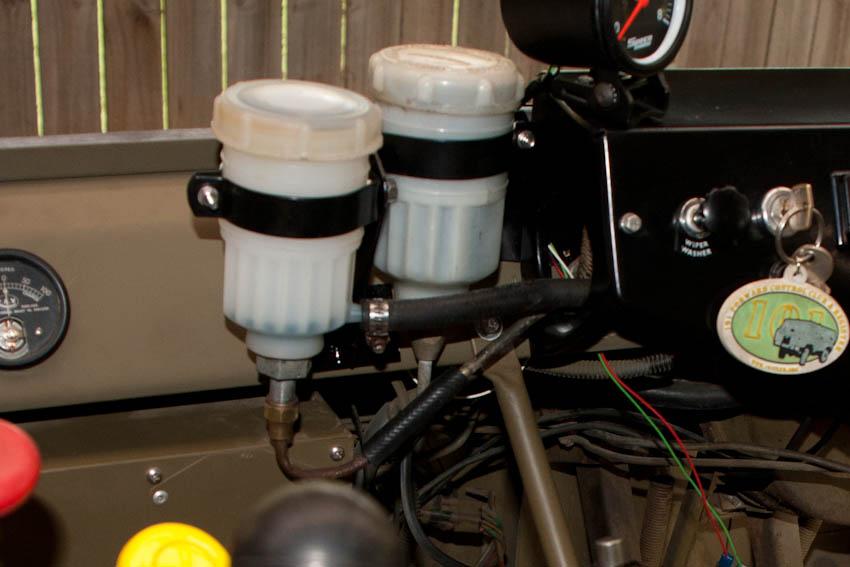
Originally Posted by
PeterP

Well Garry your diagnosis was correct, the centre hose is very blocked. I've taken the corresponding hose off the back also and it was OK but I will get them both remade. They are the same threads as the ones going to the front wheels (which I have) but are longer.
I saw your thread about joining the reservoirs and when I looked at mine the clutch went to the single cell reservoir on on the right and both the brake lines go to the dual cell one on the left. Did not see it as a real problem.

Many thanks,
Peter
That pic of yours is disgusting - too clean
- too clean .
.
I have clutch and rear brakes on one single reservoir and the front brakes on a single reservoir - I do have to correct double reservoir for the clutch and rear brakes but am too lazy to put it in.
If Can Do was mine I would be concerned about your arrangement. I do not feel that the amount of fluid in the clutch pot is enough to feed the brakes - certainly if you develop a small leak. Also you cannot see the level without taking the lid off. I would have a look at changing your arrangement.
On hoses - how are your individual brake hoses for the front brakes.
Garry
REMLR 243
2007 Range Rover Sport TDV6
1977 FC 101
1976 Jaguar XJ12C
1973 Haflinger AP700
1971 Jaguar V12 E-Type Series 3 Roadster
1957 Series 1 88"
1957 Series 1 88" Station Wagon




 - too clean
- too clean .
.
 Reply With Quote
Reply With Quote .
.




Bookmarks